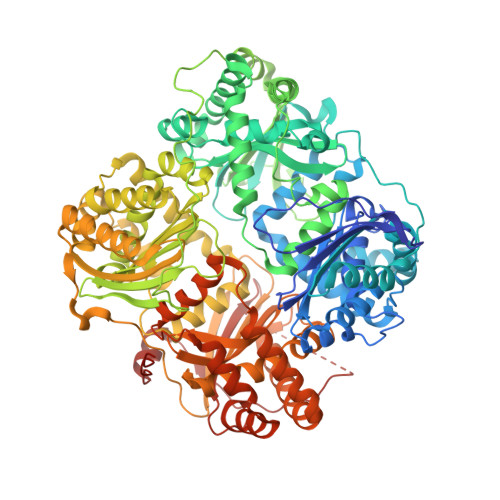Structure-activity relationships of imidazole-derived 2-[N-carbamoylmethyl-alkylamino]acetic acids, dual binders of human insulin-degrading enzyme.
Charton, J., Gauriot, M., Totobenazara, J., Hennuyer, N., Dumont, J., Bosc, D., Marechal, X., Elbakali, J., Herledan, A., Wen, X., Ronco, C., Gras-Masse, H., Heninot, A., Pottiez, V., Landry, V., Staels, B., Liang, W.G., Leroux, F., Tang, W.J., Deprez, B., Deprez-Poulain, R.(2015) Eur J Med Chem 90: 547-567
- PubMed: 25489670
- DOI: https://doi.org/10.1016/j.ejmech.2014.12.005
- Primary Citation of Related Structures:
4GSF, 4QIA - PubMed Abstract:
Insulin degrading enzyme (IDE) is a zinc metalloprotease that degrades small amyloid peptides such as amyloid-â and insulin. So far the dearth of IDE-specific pharmacological inhibitors impacts the understanding of its role in the physiopathology of Alzheimer's disease, amyloid-â clearance, and its validation as a potential therapeutic target. Hit 1 was previously discovered by high-throughput screening. Here we describe the structure-activity study, that required the synthesis of 48 analogues. We found that while the carboxylic acid, the imidazole and the tertiary amine were critical for activity, the methyl ester was successfully optimized to an amide or a 1,2,4-oxadiazole. Along with improving their activity, compounds were optimized for solubility, lipophilicity and stability in plasma and microsomes. The docking or co-crystallization of some compounds at the exosite or the catalytic site of IDE provided the structural basis for IDE inhibition. The pharmacokinetic properties of best compounds 44 and 46 were measured in vivo. As a result, 44 (BDM43079) and its methyl ester precursor 48 (BDM43124) are useful chemical probes for the exploration of IDE's role.
Organizational Affiliation:
INSERM U761 Biostructures and Drug Discovery, Lille, France; Lille F-59000, France; Institut Pasteur de Lille, IFR 142, Lille F-59000, France; PRIM, Lille F-59000, France; CDithem Platform/IGM, Paris, France.
















